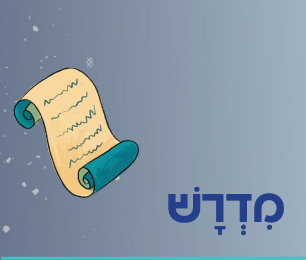Illustration Credit: Noa Kelner

Midrash מִדְרָשׁ
דַּבֵּר אֶל אַהֲרֹן וְאֶל בָּנָיו לֵאמֹר זֹאת תּוֹרַת הַחַטָּאת בִּמְקוֹם אֲשֶׁר תִּשָּׁחֵט הָעֹלָה תִּשָּׁחֵט הַחַטָּאת לִפְנֵי ה' קֹדֶשׁ קָדָשִׁים הִוא׃
Speak to Aharon and his sons and say: This is how to offer a hattat. In the same spot where an olah is slaughtered, that’s where a hattat should be slaughtered before God. It is most holy.
This is a little confusing. Couldn’t the Torah just tell us where the hattat is slaughtered without having to mention the olah? Why does the Torah go out of its way to group these two sacrifices together?
אָמַר רֵישׁ לָקִישׁ… כְּדֵי שֶׁלֹּא יִתְפַּרְסְמוּ הַחַטָּאִים.
Reish Lakish said: It’s in order not to publicize who sinned.
Bringing a hattat meant you had done a sin. So it might have been embarrassing to bring that korban in public. Reish Lakish suggests that God made the place of the hattat the same as the olah so that nobody would be able to tell which korban you were bringing, and nobody would know if you had sinned.
- Why would God want to protect the feelings of people who sinned? What does this teach us about how God wants people to be treated?
- When might shame prevent a person from setting things right? What would you tell someone who was feeling embarrassed about their actions?

-------------------
-------------------





